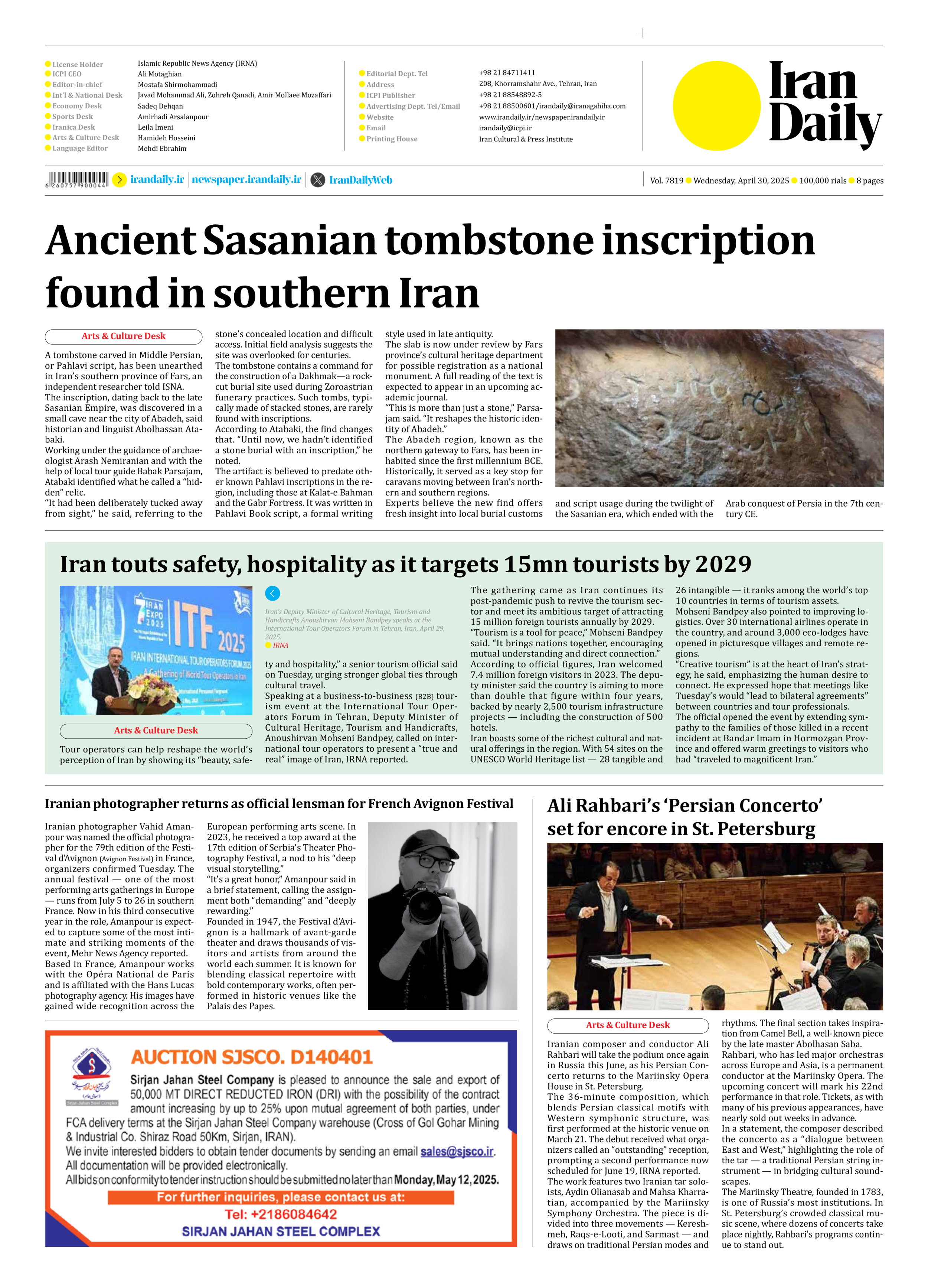
Ancient Sasanian tombstone inscription found in southern Iran
A tombstone carved in Middle Persian, or Pahlavi script, has been unearthed in Iran’s southern province of Fars, an independent researcher told ISNA.
The inscription, dating back to the late Sasanian Empire, was discovered in a small cave near the city of Abadeh, said historian and linguist Abolhassan Atabaki.
Working under the guidance of archaeologist Arash Nemiranian and with the help of local tour guide Babak Parsajam, Atabaki identified what he called a “hidden” relic.
“It had been deliberately tucked away from sight,” he said, referring to the stone’s concealed location and difficult access. Initial field analysis suggests the site was overlooked for centuries.
The tombstone contains a command for the construction of a Dakhmak—a rock-cut burial site used during Zoroastrian funerary practices. Such tombs, typically made of stacked stones, are rarely found with inscriptions.
According to Atabaki, the find changes that. “Until now, we hadn’t identified a stone burial with an inscription,” he noted.
The artifact is believed to predate other known Pahlavi inscriptions in the region, including those at Kalat-e Bahman and the Gabr Fortress. It was written in Pahlavi Book script, a formal writing style used in late antiquity.
The slab is now under review by Fars province’s cultural heritage department for possible registration as a national monument. A full reading of the text is expected to appear in an upcoming academic journal.
“This is more than just a stone,” Parsajam said. “It reshapes the historic identity of Abadeh.”
The Abadeh region, known as the northern gateway to Fars, has been inhabited since the first millennium BCE. Historically, it served as a key stop for caravans moving between Iran’s northern and southern regions.
Experts believe the new find offers fresh insight into local burial customs and script usage during the twilight of the Sasanian era, which ended with the Arab conquest of Persia in the 7th century CE.







